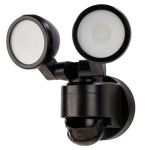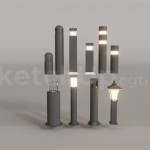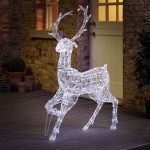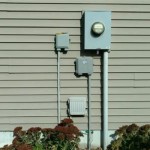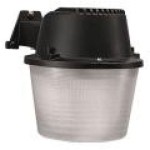Easy Ways to Light Outdoor Trees for a Stunning Landscape
Outdoor tree lighting elevates a property, transforming ordinary landscapes into captivating nighttime scenes. Effective tree lighting enhances curb appeal, increases security, and provides an inviting atmosphere for outdoor gatherings. Achieving professional-looking results does not require extensive expertise or complex installations. This article explores straightforward techniques for illuminating outdoor trees, emphasizing practicality and ease of implementation.
Understanding Lighting Principles for Trees
Effective tree lighting hinges on understanding fundamental lighting principles. Key factors include selecting appropriate fixtures, determining beam angles, and considering the overall lighting scheme. A well-planned approach avoids common pitfalls such as excessive brightness or uneven illumination, creating a balanced and visually appealing effect.
Fixture selection is paramount. Options range from spotlights and floodlights to path lights and well lights, each suited for different purposes and tree types. Spotlights are ideal for highlighting specific features, such as the tree's crown or interesting branch structures. Floodlights provide broader coverage, illuminating the entire tree canopy. Path lights, while primarily designed for walkways, can also be used to softly illuminate the base of a tree. Well lights, recessed into the ground, offer an unobtrusive way to uplight trees, creating dramatic shadows and emphasizing the tree's form.
Beam angle refers to the width of the light projected from the fixture. Narrow beam angles concentrate light on a small area, creating a focused spotlight effect. Wider beam angles disperse light over a larger area, providing a more diffused and general illumination. Selecting the appropriate beam angle depends on the size of the tree, its distance from the fixture, and the desired effect. Taller trees generally benefit from wider beam angles to ensure the entire canopy is illuminated. Smaller trees or trees closer to the fixture may require narrower beam angles to avoid overpowering the space.
The overall lighting scheme should consider the surrounding landscape and architectural features. The goal is to create a cohesive and harmonious effect, blending tree lighting with other outdoor lighting elements. Avoid creating harsh contrasts or unevenly lit areas. Instead, strive for a balanced and layered approach that enhances the overall ambiance of the property. Consider the color temperature of the lights as well. Warmer color temperatures (around 2700-3000K) create a cozy and inviting atmosphere, while cooler color temperatures (around 4000-5000K) provide a more modern and crisp look. Choose a color temperature that complements the architectural style of the house and the surrounding landscape.
Simple Lighting Techniques for Various Tree Types
Different tree types require different lighting techniques to showcase their unique characteristics. The size, shape, and foliage density of the tree all influence the optimal lighting approach. Understanding these factors allows for tailored lighting solutions that enhance the tree's natural beauty.
For large, mature trees with expansive canopies, uplighting is a common and effective technique. This involves placing fixtures at the base of the tree, directing light upward to illuminate the branches and foliage. Uplighting creates a sense of grandeur and highlights the tree's size and scale. Multiple fixtures may be required to ensure even illumination and avoid dark spots. Experiment with different fixture placements to achieve the desired effect. Consider using directional spotlights to accentuate specific branches or features.
Smaller, ornamental trees or trees with interesting bark textures benefit from downlighting. Downlighting involves mounting fixtures in the tree canopy, directing light downward to illuminate the ground below. This technique creates a soft, ambient light and accentuates the tree's texture and form. It also provides functional lighting for pathways or seating areas beneath the tree. Ensure the fixtures are securely mounted and properly shielded to prevent glare. Downlighting can also mimic the effect of moonlight filtering through the branches, creating a natural and romantic ambiance.
For trees with dense foliage, consider using a combination of uplighting and downlighting. Uplighting can highlight the overall shape of the tree, while downlighting can create interesting shadows and textures within the canopy. This layered approach adds depth and dimension to the lighting scheme. Experiment with different light intensities and beam angles to achieve the desired balance. Pay attention to the color temperature of the lights as well. Using different color temperatures for uplighting and downlighting can create a more dynamic and visually appealing effect.
Trees with unique shapes or textures, such as weeping willows or trees with gnarled branches, can be highlighted with spotlighting. This involves using narrow beam spotlights to focus attention on specific features. Spotlighting can accentuate the tree's distinctive characteristics and create a dramatic effect. Experiment with different angles and intensities to achieve the desired result. Consider using colored lenses to add visual interest and highlight specific details.
Practical Installation Tips and Safety Considerations
Safe and efficient installation is crucial for successful outdoor tree lighting. Following basic safety precautions and adhering to best practices ensures a long-lasting and trouble-free lighting system.
Before starting any installation work, it is essential to plan the layout and wiring. Determine the location of each fixture and map out the cable routes. Avoid placing fixtures in areas where they could be easily damaged or tripped over. Consider using low-voltage lighting systems, which are safer and easier to install than high-voltage systems. Low-voltage systems typically require a transformer to convert standard household voltage to a lower voltage, such as 12 or 24 volts.
Use appropriate outdoor-rated wiring and connectors to withstand the elements. Bury cables at least six inches deep to protect them from damage. Use conduit to protect cables that run above ground or through vulnerable areas. Ensure all connections are watertight to prevent corrosion and electrical hazards. Consider using weatherproof junction boxes to protect connections from moisture and debris.
When installing fixtures in trees, avoid damaging the bark or branches. Use tree-friendly mounting techniques, such as straps or clips that allow the tree to grow without restriction. Avoid using nails or screws that can penetrate the bark and create entry points for disease and pests. Regularly inspect the fixtures and wiring for damage or wear. Replace any damaged components promptly to prevent electrical hazards.
Consider using timers or photocells to automate the lighting system. Timers allow you to set specific on and off times, while photocells automatically turn the lights on at dusk and off at dawn. This can save energy and provide added security. Regularly clean the lenses of the fixtures to maintain optimal brightness. Dust and debris can reduce the light output and affect the overall appearance of the lighting scheme.
Safety is paramount when working with electricity. Always disconnect the power supply before performing any maintenance or repairs. Wear appropriate safety gear, such as gloves and eye protection. If you are not comfortable working with electricity, hire a qualified electrician to perform the installation. Follow all local electrical codes and regulations. Ensure the lighting system is properly grounded to prevent electrical shock.

Tree Lights For Spring And Summer Yard Envy

How To Put Fairy Lights On A Tree An Easy Guide For Beginners

Guide To Wrapping Trees With Commercial Holiday Lights

Light Displays Outdoor Decorations Lights

Outdoor Tree Lighting Ideas Lights All Year

How To Illuminate Trees And Plants Moonlight Design

How To Wrap A Tree With Lights

How To Put Lights On A Large Outdoor Tree Ryno Lawn Care Llc

What Are The Best Lights For Outdoor Foliage Lighting

Create A Willow Effect By Hanging Mini Lights From Tree Branches Dream Garden Holiday Display Outdoor Gardens
Related Posts
